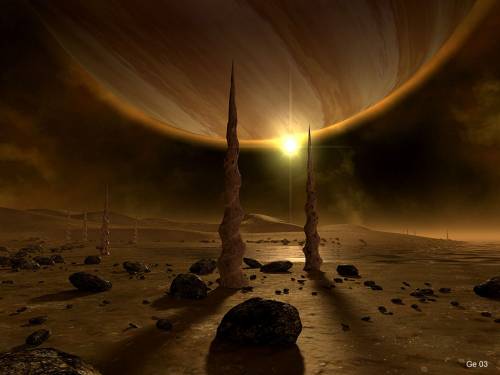
Ok, here's my second post and it touches on Science Fiction once more- this time the science behind the Lightsaber. May the force be with me, because this will be hard. Ok, first off many often call a lightsaber a "laser sword". the thing is, a laser being an intense beam of light would not end at a certain length nor would it cast a shadow as it certainly does. Cleverly enough, George Lucas, or someone at lucas arts, used real physics to create a plausible and believable lightsaber.
Plasma
Ok, you know there are three states of matter, solid, liquid and gas. There is a fourth state that is rarely used in elementary science- plasma! Sci-fi writers the world over did not create it- it was and still is present in the most common of objects such as neon tubes, plasma screen TVs (obviously!) and the Sun itself! In fact plasma accounts for the greatest source of mass in the universe. Now what is plasma and what the heck does it have to do with light sabers? Well plasma is basically ionized gas- at least 1% ionized to be exact. This gas begins to display some very non-gasious behavior, for example it now becomes an excellent conductor of electricity. Those of you in the know would realize that if that were true of normal gasses any source of power such as a wall socket could potentially cause you, your house, your pet dog and probably your mango to be zapped to kingdom come - lightning is a good example of what happens when sufficient air is ionized to send excess charge from the clouds streaking down to the earth.
First let's picture a "simpler" weapon: A blaster merely emits a highly accelerated projected shaft of highly ionized plasma this is perfectly plausible in terms of physics although it is questionable whether true blasters really have that sufficient range. We are talking about ejecting a highly ionized gas, which would tend to disperse. This is apparently kept in shape by the sheer velocity of the particles. Light sabers are similar, with one exception: A mysterious force field limits the length of the plasma blade, while redirecting it back toward the hilt in an endless cycle. This allows for a much smaller energy source in the hilt, since the plasma is not continuously lost to the air around it.
Force Field
The fact is that use of a force field to contain the plasma is plausible: ionized particles are affected by magnetic fields. The mysterious "force field" may well be a magnetic field. In fact this very phenomenon is illustrated by the creation of plasma windows, a layer of plasma bound by magnetic fields. However plasma windows are well....not really ideal for frying anything. If anything they create an almost true to life force field as they repel any object that attempts to enter it. The plasma now charges anything that attempts to break the field and repels it. Charges of the same ionization tend to repel, and the object is repelled before it can be captured by the magnetic field. The only explanation left is that the magnetic field collapses on contact, allowing the plasma to rush out at the point of contact. The emission of plasma raises another question: in theory this means that a person cutting anything with the plasma blade will be pushed backwards. No exertion to counter this backward force is noted on any jedi, so one can only assume that the writers did not take this fact into account. Then there's the question of how a magnetic field can be emited by the hilt to encompass the entire blade- that cannot be explained at all.
A light saber is perfectly possible, though the equipment used to create it perfectly impossible. Its uses are also limited, though there is a ray of hope for force fields!
No comments:
Post a Comment